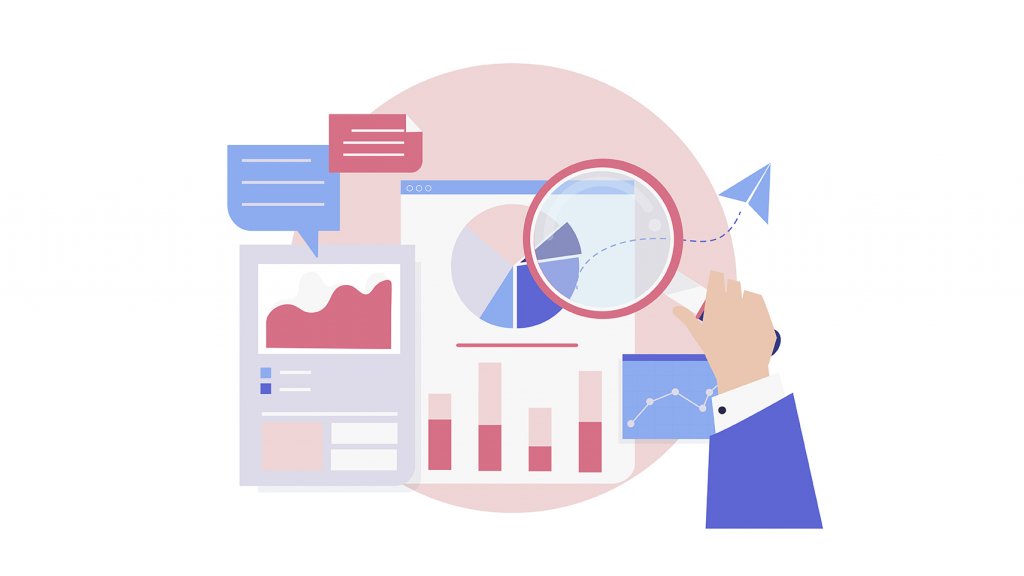
In order to utilize the power of technologies such as data and digital technology in business, there is a movement to promote the conversion of companies to digital transformation. While there are merits such as operational efficiency and data analysis, the introduction is urgent, but due to factors such as labor shortage and delay in system introduction, the current situation is that DX conversion has not progressed well in Japan. Then, what points do we need to suppress in order to make DX successful? In this article, based on the meaning of DX, we will introduce tips for success, reasons why DX is required to analyze data and points to note.
Table of contents
- Why DX Success requires Data Analysis
- 7 items for analyzing data
- Precautions for data analysis in DX
- Challenges when promoting DX
- If you have trouble with data analysis / DX promotion, leave it to TRYETING’s no-code AI cloud “UMWELT”!
- summary
What is DX?

First of all, I will explain in an easy-to-understand manner what DX (digital transformation) is all about. It also describes the differences between DX and IT, which are difficult to understand for first-time users, so please read it.
What is DX (Digital Transformation)?
DX (Digital Transformation) is a term that refers to the transformation brought about by the penetration of IT (information technology) into all areas of society. It is a concept advocated by E = Stortermann of Sweden in 2004, and it is said that it affects not only the business field but also the industrial structure and social infrastructure widely.
Difference between DX and IT
IT and DX are similar and different, with the following differences.
- IT method A method to improve the efficiency of the conventional method with technology.
- How to create a new way with DX technology.
While IT is just a means to improve operational efficiency, DX is aimed at creating new value and transforming competitive advantage and business models.
DX has “offensive” and “defensive”

DX has offense and defense. Offensive and defensive in DX is the difference between new creation and existing improvement. I will explain each content concretely.
Offensive DX
Offensive DX is an activity that innovates the customer experience and creates a new industry by digitizing existing operations. Offensive DX includes customer experience innovations that accumulate customer purchase data through e-commerce sales, analyze the data, and make personalized proposals to customers who repeatedly visit the store, and create new businesses.
Defensive DX
Defensive DX means activities that digitally transform existing business processes. Defensive DX includes digitalization aimed at improving business efficiency and cost reduction, introducing business systems such as MA and SFA, and automating the management of customer information.
Why DX Success requires Data Analysis

Data analysis is essential for DX success. We will explain why data analysis is necessary for DX conversion, such as viewing data as an asset and improving work efficiency through visualization.
Data becomes a corporate asset
Sayoko Shimoyama, Representative Director of LinkData, a general incorporated association that supports the utilization of data by local governments and companies, took the stage at the “Digital Nation Nippon Strategy Conference” and said, “Data has high value as it is said to be oil and soil in the 21st century. Is. “
The content is that data has a high asset value that can also be a corporate asset, and not collecting data is the same as draining oil without taking it. In recent years, new social services have been created in various places around the world, and the use of technology is advancing. In such a society, data will play a role like soil = assets in the future.
Visualization becomes possible with data
By collecting data, we will be able to see objective facts as numbers that could only be judged by experience and intuition, and we will be able to make judgments without relying on prejudice. In addition, by visualizing data, even newcomers will be more powerful than veterans, and it will be possible to prevent employees from becoming personalized.
7 items for analyzing data

We will explain each of the 7 items required to analyze the data.
1. Clarify the purpose
The first step in data analysis is to clarify the “what you want to analyze and what you want to achieve” that is necessary for the task of data visualization. This is an important step because if you do not clarify the purpose, you will not be able to perform the necessary data analysis.
2. Raise a problem
Once the purpose of the data analysis is determined, the next step is to find the “problem to be solved” necessary to achieve the purpose of the analysis. If the problem to be solved remains ambiguous, accurate analysis will not be possible, so raise the problem firmly.
3. Make an analysis plan
Once the purpose of the data analysis and the problem have been raised, the next step is to make an analysis plan. Planning a data analysis is an essential step, as it reveals the time, cost, and technical challenges needed to achieve your goals.
4. Collect data
Then collect the data needed for data analysis. However, collecting data in the dark clouds is often useless, so be sure to collect data that suits your purpose.
5. Process the data into a usable form
The collected data may not always be available for analysis as is. Therefore, after collecting the data, we will process the data such as adding necessary items and correcting input errors. This step is a characteristic process for data analysis. By processing and organizing complicated data, it becomes easier to find relationships and factors.
6. Analyze
Through the above steps, it is finally possible to perform data analysis. For example, in the case of deciding on a restaurant, it is the phase to browse a lot of restaurant reviews and decide whether each restaurant is good or bad. By following these steps in order, you will be able to efficiently perform data analysis that suits your purpose.
7. Create an answer from the results
No matter how successful your data analysis is, you will not be able to achieve your goals unless you get the answers you want from the results. Therefore, once you have finished performing the data analysis, you need to create an answer for the purpose you initially set. The analysis result becomes meaningful only when the analysis result is linked to the purpose, such as verifying the effect after execution.
Precautions for data analysis in DX

There are some points to be aware of when analyzing data in DX, such as security issues. I will explain each of the points to note in data analysis.
Thorough security
As mentioned in the usage points, big data often handles personal information such as customer information on the Internet. Therefore, it is necessary to thoroughly secure the Internet to protect it from viruses and server attacks.
Analysis results change depending on the location where the data is extracted
Among big data, which is a wide variety of data groups, there are data that do not meet the purpose of analysis, data that is partially missing, and data that has notational fluctuations and duplications. Therefore, the analysis result will change depending on the location where the data is extracted. In order to achieve the goal with the data analysis result, let’s clarify the purpose of the data analysis and decide the data to be extracted before executing it.
Objectively face the analysis results
If big data analysis goes wrong, you may end up relying on your own experience and intuition. In addition, no matter how successful the analysis is, it is possible that the results will be applied to the cases of other companies, causing deviations in the patterns and directions of the company. In order to perform accurate data analysis, it is important to have an objective attitude toward the analysis results.
Challenges when promoting DX

Although it is a DX that is indispensable for data analysis, the current situation is that it has not progressed yet due to the shortage of IT human resources. We will explain the issues and reasons for promoting DX.
Lack of human resources
With the expansion of Internet services such as AI and IoT, the IT industry is growing rapidly. The shortage of human resources continues as the number of engineers required increases in proportion to the amount of services. According to the IT Human Resources White Paper 2019 of the Information-technology Promotion Agency (IPA) Social Infrastructure Center, the shortage of IT human resources by IT companies was 75.5% in 2016, but it will be 92% in 2018, two years later. It is said that it also extends.
Furthermore, according to a demand survey on “IT human resources by 2030” commissioned by the Ministry of Economy, Trade and Industry, it is predicted that there will be a shortage of 790,000 in the worst scenario and 450,000 in the middle scenario.
Lack of understanding of technology
Compared to companies in other developed countries such as the United States and China, Japanese companies are said to spend less on IT investment and are more likely to outsource their IT strategies to external companies such as system integrators (SIers). .. Therefore, it is possible that there are many cases where know-how is not accumulated in-house. In promoting DX, it is important to increase the number of human resources who understand technology in-house and start in-house production while relying on specialists.
There will be a cost
In order to make DX, it is indispensable to introduce a system in which machines perform business and analysis instead of human hands. However, the system is not only costly to install, but also costly to operate. For example, when introducing digital tools to improve business efficiency, initial costs at the time of introduction and operating costs for maintenance support are incurred.
In particular, the larger the scale and the more advanced the system is, the higher the cost will be, so it is necessary to consider cost effectiveness.
If you have trouble with data analysis / DX promotion, leave it to TRYETING’s no-code AI cloud “UMWELT”!
Data analysis by introducing the system is indispensable for promoting DX. However, system development from scratch requires development costs and specialized knowledge.
The no-code AI cloud “UMWELT” developed by TRYETING is a recommended tool for companies that lack IT human resources and want to promote in-house DX at a low cost. UMWELT is equipped with many algorithms, and it is possible to build an IT system using AI on the same day, such as demand forecasting, inventory management, shift creation, data analysis, and so on. The price is also the lowest in the industry, and after the introduction, there is support from our consultant, so you can rest assured even if there are no IT personnel on site.
summary
Data analysis, information sharing, and training of AI human resources by introducing the system are important for the DX conversion of companies. However, it is extremely difficult to suddenly introduce a system or hire human resources. UMWELT provides a companion-type support service for customers who want to promote DX from now on, so if you are interested, please check the service page.


